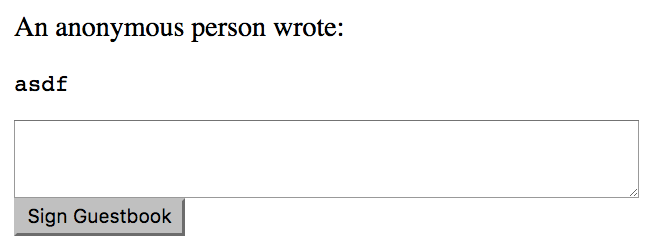如何在 Google Cloud 撰寫和部署 Go 程式
阿新 • • 發佈:2018-12-09
如何在 Google Cloud 撰寫和部署 Go 程式
Google 雲端 App Engine, 除了可以用 Python, Java, PHP 語言來撰寫程式以外, 也可以用 Go 語言, 這裡教大家怎麼開始. 但我們不用 App Engine 來部署, 改用 Container Engine (still in Beta).
- 建議大家盡量用 Google Container Engine (docker), 而非 App Engine, 因為 container 終究會比較便宜, 而且也比較有彈性. 因此, 這裡選擇用 flexible 環境 (做 beta 測試, 也不用錢) -> https://cloud.google.com/appengine/docs/flexible/go/quickstart
- [假設一] 你已經安裝好 go 開發環境, 如果還沒有, 請點選 -> (install go), 或直接進入你 Google Cloud Console 的 Google Cloud Shell (>_ ), 那裡也有一個免費電腦, 安裝好 go 語言.


4. 用 Google Cloud Shell 為例, (你也可以在 local 電腦, 先測試你的 go 程式) 如下圖, 如果您執行 goapp serve 後, 選擇左上角的 Web preview icon 就能顯示你 http://0.0.0.0:8080 網頁內容.


5. 執行測試程式 guestbook 如下
git clone https://github.com/GoogleCloudPlatform/appengine-guestbook-go.gitcd appengine-guestbook-go/git fetchgit checkout part4-usingdatastoregoapp serve顯示網頁結果如下:


6. 部署到正式網址, https://oidc-1339.appspot.com/ , 這裡 oidc-1339 是你當下 Google cloud 的 Project ID, 以下範例以 mingderwang 帳號為例, 如果你 username 為 alex, GOPATH 就換成 /home/alex/gopath (在 Google Cloud Shell 下為例)
export GOPATH=/home/mingderwang/gopath
go get -u -d github.com/GoogleCloudPlatform/golang-samples/appengine_flexible/helloworld
cd $GOPATH/src/github.com/GoogleCloudPlatform/golang-samples/appengine_flexible/helloworld
aedeploy gcloud app deploy
7. 我們利用 GOogle 所提供的範例程式, 來測試部署, 有兩個檔案 app.yml 與 helloworld.go 內容如下; 從 app.yml env: flex 看出來, 它是部署在 flexible 環境 (舊名稱叫 Managed VMs), 而非 App Engine 環境!
$ cat app.yml
runtime: goenv: flex
$ cat helloworld.go
// Copyright 2015 Google Inc. All rights reserved.// Use of this source code is governed by the Apache 2.0// license that can be found in the LICENSE file.
// Sample helloworld is a basic App Engine flexible app.package main
import ( "fmt" "log" "net/http")
func main() { http.HandleFunc("/", handle) http.HandleFunc("/_ah/health", healthCheckHandler) log.Print("Listening on port 8080") log.Fatal(http.ListenAndServe(":8080", nil))}func handle(w http.ResponseWriter, r *http.Request) { if r.URL.Path != "/" { http.NotFound(w, r) return } fmt.Fprint(w, "Hello world!")}func healthCheckHandler(w http.ResponseWriter, r *http.Request) { fmt.Fprint(w, "ok")}
